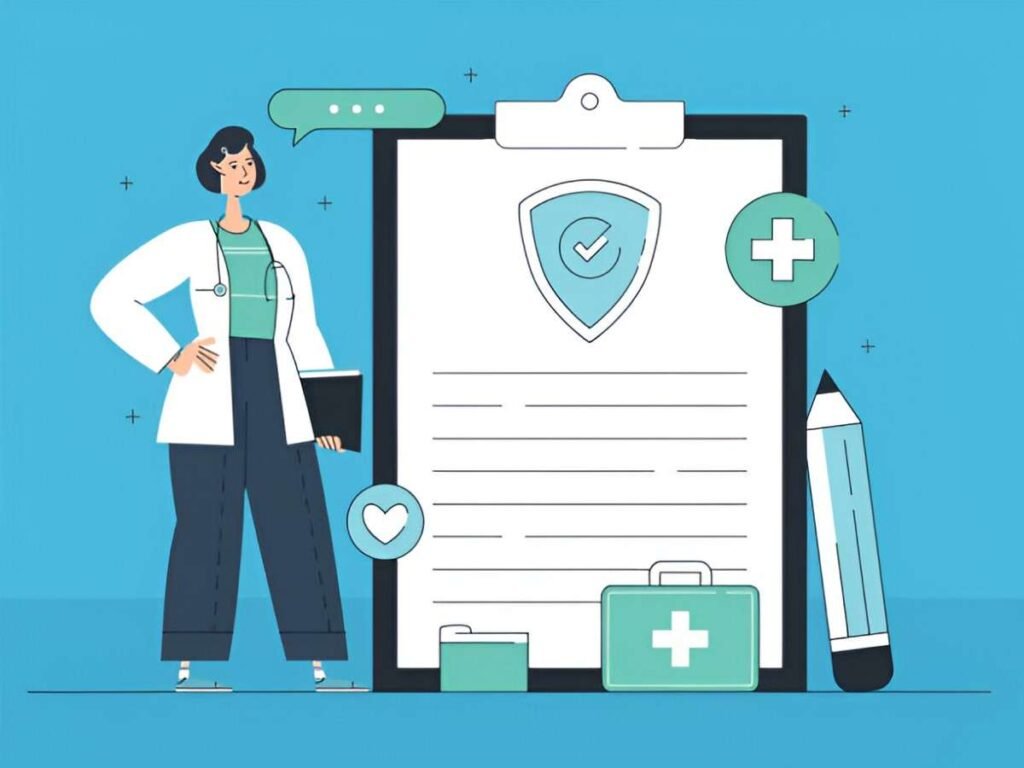Health insurance costs in the U.S. have been rising steadily, putting financial strain on individuals and families. According to the Kaiser Family Foundation, the average annual premium for employer-sponsored family coverage reached $23,968 in 2023, with workers contributing $6,575 toward that cost. If you’re self-employed or buying insurance independently, the burden can be even heavier.
Table of Contents
1. Choose a High-Deductible Health Plan (HDHP) with an HSA
High-Deductible Health Plans (HDHPs) come with lower premiums but higher deductibles. These plans pair well with a Health Savings Account (HSA), which offers triple tax advantages:
- Tax-deductible contributions
- Tax-free growth
- Tax-free withdrawals for qualified medical expenses
For 2024, the IRS allows individuals to contribute up to $4,150 and families up to $8,300 to an HSA. If you’re 55 or older, you can add an extra $1,000 as a catch-up contribution.
Example Calculation: HDHP vs. Traditional Plan
| Plan Type | Monthly Premium | Annual Deductible | Max Out-of-Pocket | HSA Contribution |
|---|---|---|---|---|
| HDHP | $300 | $3,000 | $7,000 | $4,150 |
| Traditional PPO | $600 | $1,500 | $5,000 | N/A |
If you’re healthy and rarely visit the doctor, the HDHP saves you $3,600 annually in premiums. Even if you max out the deductible, the HSA tax benefits can offset costs.
2. Shop Around During Open Enrollment
Many people stick with the same insurer out of habit, but shopping around can yield significant savings. Use the Health Insurance Marketplace (Healthcare.gov) or state exchanges to compare plans.
Key Factors to Compare:
- Premiums
- Deductibles
- Copays and coinsurance
- Network coverage
A 2022 study by the Robert Wood Johnson Foundation found that 60% of Marketplace enrollees could find a lower-cost plan in the same metal tier by switching insurers.
3. Optimize Your Tax Credits
If you buy insurance through the Marketplace, you may qualify for Premium Tax Credits (PTCs). These credits reduce your monthly premiums based on income.
The formula for PTC is:
PTC = \text{Benchmark Plan Premium} - \text{Your Expected Contribution}Your expected contribution is a percentage of your income. For example, if your household income is $40,000 (250% of the federal poverty level), your expected contribution is 8.5% of income, or $3,400 annually. If the benchmark plan costs $6,000, your tax credit would be:
PTC = 6,000 - 3,400 = 2,600This means you’d pay $283 per month instead of $500.
4. Consider Short-Term Health Insurance
Short-term plans are cheaper but offer limited coverage. They work best for:
- Healthy individuals needing temporary coverage
- Those between jobs
- Early retirees waiting for Medicare
Pros & Cons of Short-Term Plans
| Pros | Cons |
|---|---|
| Lower premiums | No coverage for pre-existing conditions |
| Quick approval | Limited benefits (e.g., no maternity care) |
| Flexible duration (1-12 months) | Not ACA-compliant |
5. Join a Health Sharing Ministry
Health Sharing Ministries (HSMs) are faith-based cost-sharing programs where members pool money to cover medical expenses. They’re not insurance but can be 60% cheaper than traditional plans.
Popular HSMs:
- Medi-Share
- Samaritan Ministries
- Liberty HealthShare
Drawbacks:
- No guarantee of payment
- Religious requirements
- Exclusions for certain treatments
6. Negotiate Medical Bills
Hospitals and providers often inflate prices, but you can negotiate. A 2021 JAMA study found that 50% of hospital bills contain errors.
Steps to Negotiate:
- Request an itemized bill
- Check for duplicate charges
- Ask for a cash discount (hospitals often give 10-30% off)
Example: If your bill is $5,000, a 20% discount saves you $1,000.
7. Use Telemedicine Services
Telemedicine visits cost 40-50% less than in-person doctor visits. Many insurers now offer $0 copay telehealth options.
Cost Comparison:
| Service | In-Person Visit | Telemedicine Visit |
|---|---|---|
| Primary Care | $150 | $50 |
| Specialist | $250 | $100 |
8. Take Advantage of Preventive Care
The ACA requires insurers to cover 100% of preventive services (e.g., vaccinations, screenings). Catching health issues early reduces long-term costs.
9. Opt for Generic Drugs
Brand-name drugs cost 80-85% more than generics. Always ask your doctor if a generic alternative exists.
Example Savings:
| Drug | Brand-Name Cost | Generic Cost | Annual Savings |
|---|---|---|---|
| Lipitor | $300 | $20 | $3,360 |
| Prozac | $200 | $10 | $2,280 |
10. Adjust Your Income to Qualify for Subsidies
If you’re near the subsidy threshold, reducing taxable income (via retirement contributions or HSA deposits) can qualify you for larger tax credits.
Example:
- Income: $55,000 (just above 400% FPL)
- Contribute $5,000 to a 401(k) → Adjusted income: $50,000
- Now eligible for subsidies worth $2,000+/year
Final Thoughts
Health insurance doesn’t have to break the bank. By strategically selecting plans, leveraging tax benefits, and negotiating costs, you can significantly reduce expenses without compromising care. The key is to analyze your needs, compare options, and take advantage of every available discount.





